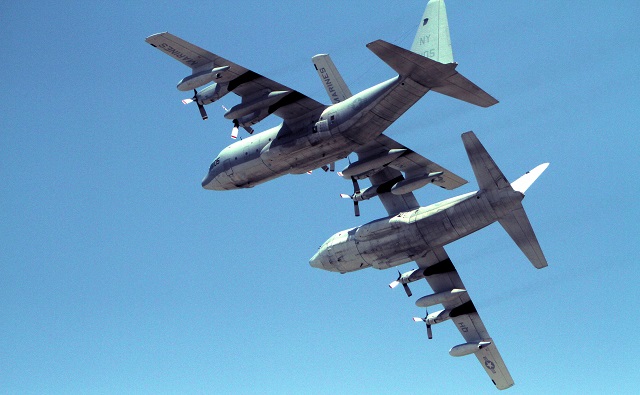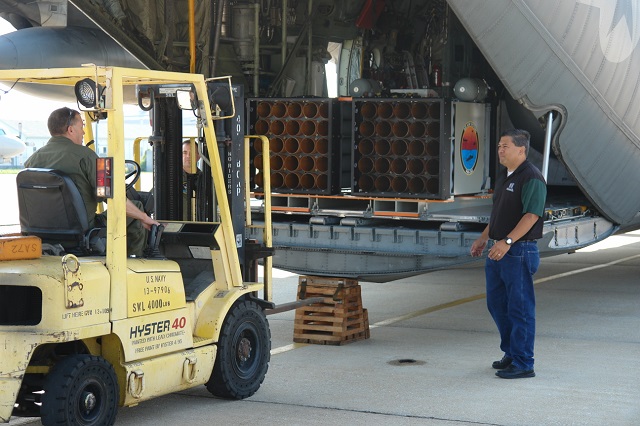 Two KC-130T Hercules aircrafts flown by the Air Combat Element of Black Sea Rotational Force 11, perform a “section overhead break". Photo by Cpl. Tatum Vayavananda |
|||
Air Test and Evaluation Squadron
(VX) 30 with Naval Air Warfare Center Weapons Division’s (NAWCWD)
Naval Test Wing Pacific performs the testing, and NAWCWD collaborated
in developing this innovative solution. In October 2015, VX-30 retired
the S-3B Viking aircraft it had been using to test sonobuoys, transitioning
to the KC-130T. “As lead designer, the NAWCAD Engineering and Prototyping Facility (AD 4.11.5.1) worked collaboratively with Air Vehicle Stores Compatibility (AD 5.1.6.7), the Stores Compatibility Support Labs (AD 5.1.6.8) and PMA-264 to identify requirements and generate a design that could be efficiently fabricated and assembled to support cost and schedule constraints,” said Joe Bailey, NAWCAD Rapid Capabilities Engineering and Integration Department (AD 4.11). “We also developed the airworthiness certification package while 5.1.6.8 fabricated the parts, assembled the systems and delivered them for wiring and testing.” Air Vehicle Stores Compatibility engineers then planned and conducted the successful ground and flight testing. “The team has been ecstatic at the end result and the timeframe that we were able to receive the final end product,” said Ken Sherman, PMA-264 deputy integrated program team lead for sonobuoy production. “There has been great cooperation between the representatives of PMA-264, the Air Vehicle Stores Compatibility Support Labs, and the Engineering and Prototyping Facility in providing the new launcher system within the desired timeline.” In total, the team produced three launching systems for VX-30. Fit checks took place in August, and the final system was delivered Nov. 23, ahead of schedule. |
|||
U.S. Navy Creates System to Test Sonobuoys from KC-130T Hercules Aircraft
- Posted On











